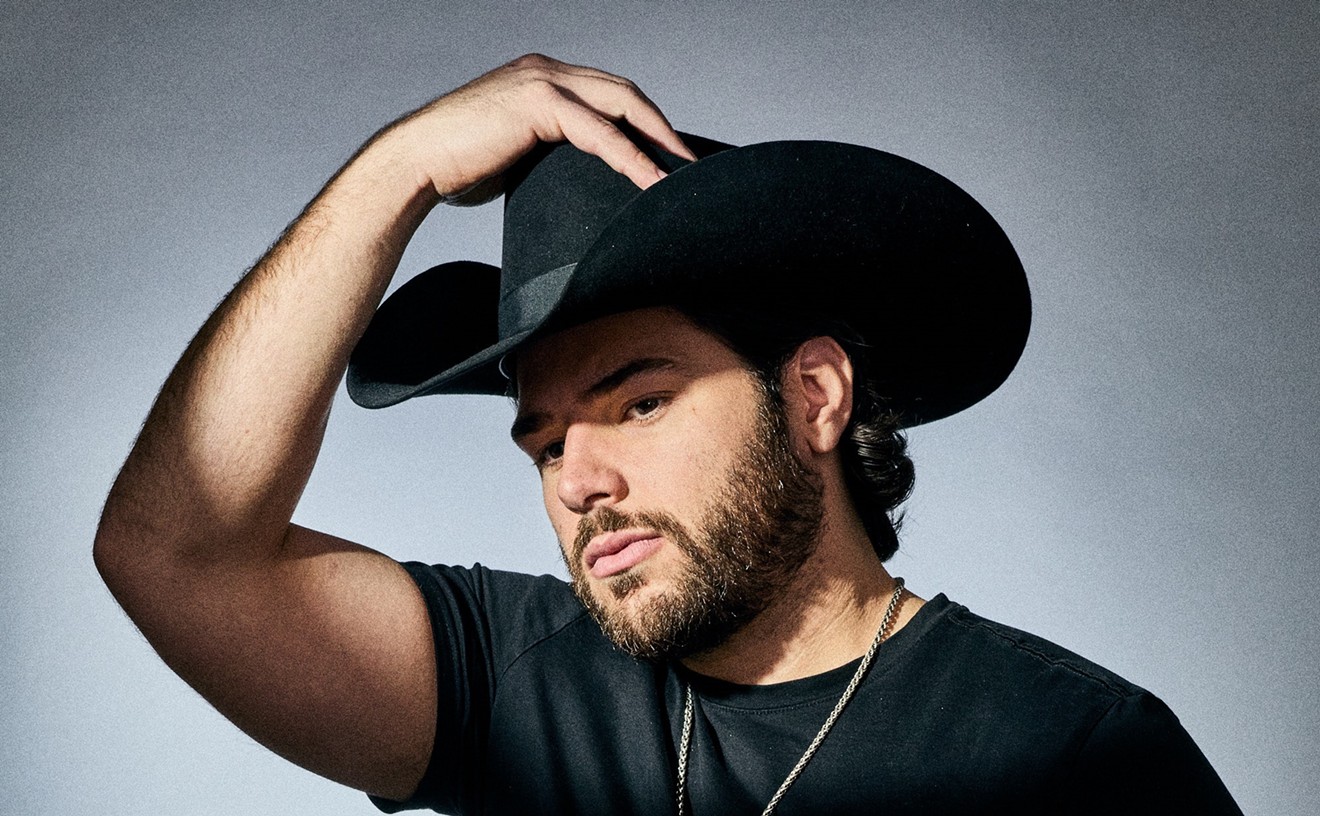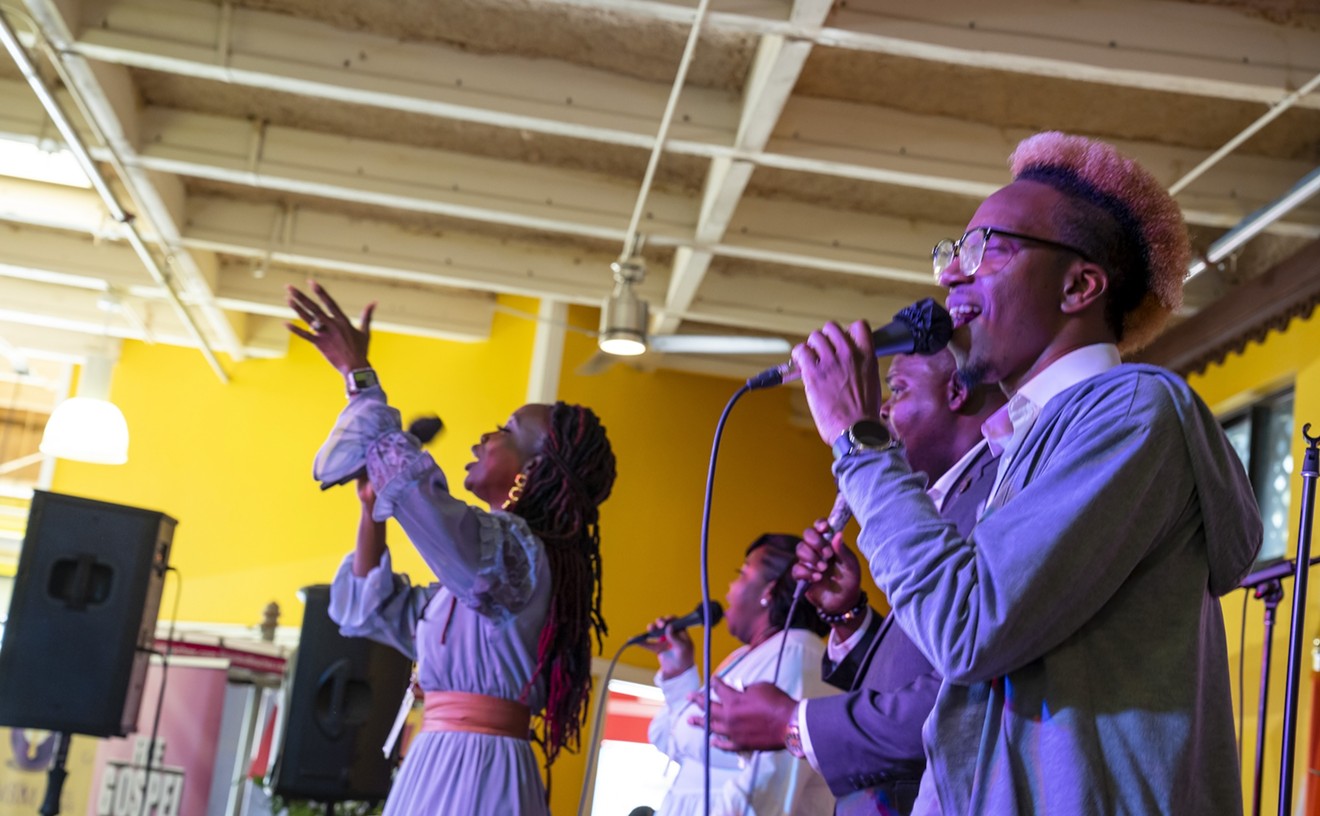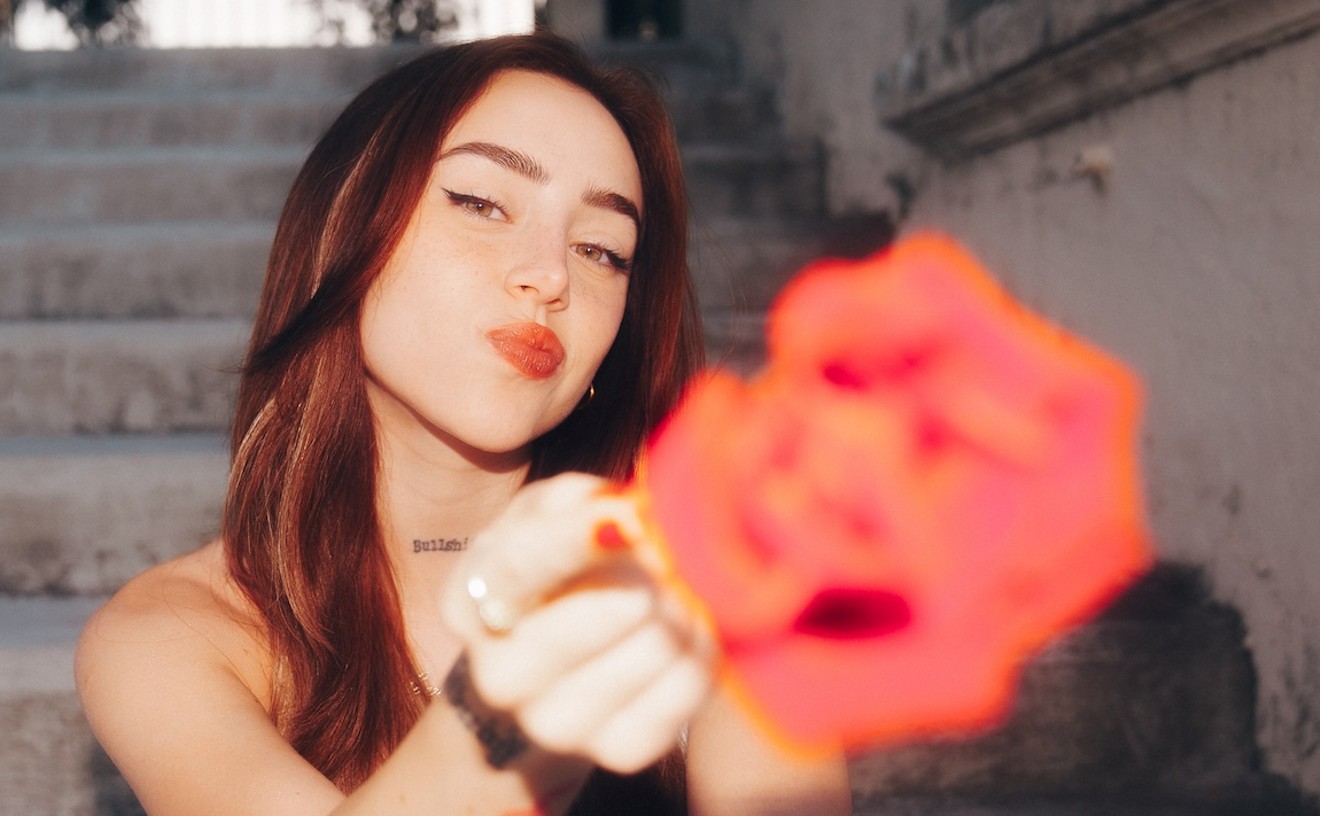The pressure to move things forward fuels music's development. But which way is forward? For dubstep, the current hottest sound of the London underground, forward means down, questing to see just how low that bass line can be pushed.
It's a genre that borrows from a confluence of British dance music styles, including two-step garage, jungle, dub reggae, broken beat, and tech-house. And in recent months, it's even found its way onto American radio, as the backdrop for Eve's summer 2009 track "Me N My," which was coproduced by dubstep legend Benga.
And dubstep's postrave vibrations will commandeer Winter Music Conference this year. Take, for example, the Smog vs. Basshead party happening Thursday, March 25, at White Room. But most important, dubstep takes over Ultra Music Festival's Biscayne Stage Saturday, March 27, with a lineup that features Benga and fellow original sound boys Skream, Rusko, Caspa, and Toddla T, among others.
Dubstep emerged around 2001, in part from the kick-off of a club night appropriately called, FWD>>, which began as a showcase for the "dark garage" riddims of artists such as Horsepower Productions and El-B. And the genre began as a part of and apart from others — as the instrumental DJ-centric contrast to east London's grime's off-center MCs, and as a sound centered on one isolated suburb and even one record store in south London: Croydon's Big Apple Records.
The supple low end of the Tempa label's releases and percussion of murkily dubbed ragga jungle mixtapes were being filtered through the digital judder of artists such as Skream, Benga, Digital Mystikz, and Loefah and making their way as dubplates to DJ Hatcha gigs and Kode9's pirate radio Rinse FM show. (Of note was last year's release 5: Five Years of Hyperdub, which compiled highlights of the first five years from Kode9's label of the same name.)
From the beginning, stark space was used as a specific tool to offset the champagne-and-limos crowd on the one hand and the hyper-mechanized darkside drum 'n' bass mentalists on the other. Avoiding percussive bombardment has allowed the form to be a cultural exchange, allowing for unlikely pairings such as dubstep producer Shackleton getting deep with premier Berlin minimal DJ Ricardo Villalobos. (In fact, that echoes the lineage of Basic Channel's dub techno deconstructions.) And over time, the sound has gone from meditative to melodic and been injected with Far Eastern adrenaline and woozy synth squiggles, because above anything, its receptors have always been open to all angles.
"In 1992, there was a 140-bpm melting pot of sounds cobbled together from everywhere that became a unique dance-floor sound from London — jungle," Christopher "Rusko" Mercer reflects. He's one of the most visible dubstep ambassadors to North America thanks to associations with hipster beat emissaries Diplo and M.I.A., among others. "And 10 years later, you had a 140-bpm melting pot of sounds from London — dubstep. But this time, the ultimate goal is to keep it fun, more musical, but be hardcore in the essence of the bass, the undertones, without being overly dark."
Along with Dub Police production/DJ partner Gary "Caspa" McCann, Mercer has certainly helped push dubstep's friendly tempo and tuff beats into the main room in the UK. In late 2007, Caspa and Rusko's FabricLive 37 mix became the first widely distributed dubstep release, making it to North America in February 2008. The mix includes tracks that explore several of the hype-to-chill permutations of dubstep that have flourished in the Internet age. That's the thing about the genre: It acts as an open floor plan onto which any inflection can be projected, whether it's a back-to-time, aqueous garage sound or wonky, new beat/acid house synths.
Overriding much of that FabricLive 37 mix, however, is a swagger, a pervading wobble and push to keep everything slightly off the grid, or as Caspa puts it, quoting his mastering engineer: "The snare should smack you in the face and the bass punch you in the chest." These cheekily thunderous smashers have sometimes been characterized as "masculine" in a sense that they favor uncompromising energy to sensuality and therefore are jokingly referred to by some as "brostep." The joke is on the crowd if it doesn't come to sweat, however. And with Caspa having released the album Everybody's Talking, Nobody's Listening! in May 2009, and Rusko releasing his commercially minded "bass-focused party music" debut O.M.G.! on Diplo's Mad Decent this May, the dubstep-infused peak hour isn't going anywhere.
Meanwhile, another leading light of the scene, DJ/producer Tom "Toddla T" Bell, has a naturally more bleep-tolerant relationship to bass-heavy music that's mongrel in the best way. He hails from intelligent dance music's ancestral home, Sheffield, and is a selector on radio and in clubs. Toddla T for the most part runs through a more directly West Indian-influenced, patois-enriched blend of bashment, grime, and bass-line house. (Just see the title of his 2009 album, Skanky Skanky.)
But even he includes productions by irrepressible dubstep artists — including Caspa, Untold, and Skream — on his FabricLive 47 sound clash. "DJs like Skream have replaced midrange, noisy electro DJs," Bell observes. "It's mad."
So where is dubstep headed? According to Skream's retro-tastic remix of La Roux's "In for the Kill" and his blissed-out single "Listening to the Records on My Wall," the answer seems to be: back to the future. Full of reverberant snares and propellant syncopation but also an ascendant melodic clarity, Skream's tracks flex on a roll more fiercely satisfying than any junglist has been able to create in recent times. Both tunes really bring back an old-school flair to the contemporary circuitry and evoke a sense of rhythmic social collective. At the same time, you can find nods to skippier, thinner beats and flushed vocals swinging though other Skream tracks.
And those are just the productions of one fellow. Out there also are tracks of skeletal brooding, off-key smears of chords, street-wise anthems, a smattering of eight-bit and 808, and countless other, yet unrevealed mutations. There are far too many artists operating, innovating, and attracting clubbers and blog nerds alike to say dubstep is headed anywhere but up.










